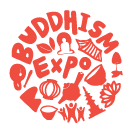수행의식
-
(04419) 서울 용산구 독서당로 95 (한남동, 몽골대사관)
+976-88081261
gandanmn2020@gmail.com
INTRODUCTION TO GANDAN TEGCHENLING MONASTERY THE CENTRE OF MONGOLIAN BUDDHISTS
In accordance with the buddha`s prophecy, “My Dharma will flourish from the north further to the north”, Buddhism come to Mongolia from India, its country of origin, more than 2.000 years ago an its three-fold spread has been recorded in Mongolian Buddhist history. Since its first spread, Buddhism came to this day through a series of declines and revivals. In the 16th century, the Buddhist Nalanda Tradition, particularly the Gelukpa Tradition, developed in its complete and genuine form throughout the Mongol territories among the upper and lower social classes and become the most dominant religion accepted by all the commoners by the 20th century. In 1639, Undur Gegeen Zanabazar (the First Bogd Jevzundamba, or Jetsung Tempo 1635-1723), was enthroned as the head of Mongolian Buddhism at the Lake Shireet Tsagaan and at the meantime, his residential area was marked with “Shar budiin Teg” or special yellow line as a significant mark, which later became the foundation of Ikh Khuree or the current capital, Ulaanbaatar. In 1956, Undur Gegeen Zanabazar initially established Ikh Khuree or Rivugejal Gandan Shadduvling [Ripo Gegye Gaden Shadrup Ling] in a region of Khentii mountains. By that time, Ikh Khuree consisted of Tsogchen Bat Tsagaan and other seven religious provinces such as Amdo, Jas, Sangal, Zoogol, Khuukhen Noyon, Darkhan Emch and Urluud. As the number of its residential sanghas increased to 10.000, the seven religious provinces were multiplied to thirty provinces and 12 dratsangs were established. Tsogchen was a superior administrative unit to all other dratsangs and provinces with regard to monastic regulations. It used to have two khamba lamas [Khenpo], five tsor] lamas [choeje], and four gesgui lamas [gegu]. Nowadays, Tsogchen is preserving this superior administrative tradition.
Ikh Khuree [the old capital] was built on the model of the Nalanda University. It was recognized as the main and most important religious centre in Mongolia, which provided the entire country with scholastic resources regarding all the fields of the five minor Buddhist sciences; science of poetics, science of synonymy, science of prosody, science of drama and science of astrology, and the five major Buddhist sciences; science of fine arts, science of medicine, science of linguistics, science of philosophy and the inner science. It did so through the twelve traditional monastic colleges [dratsangs] and thirty regional sections [aimags]. On the example of general chanting rules of Tashi Lhunpo Monastery in Tibet, Undur Gegeen Zanabazar created a unique Mongolian chanting rhythm and rituals. This unique tradition was suppressed in the 1930s. however during the communist purge, thousands of Buddhist scholars and sanghas were executed and this great Buddhist heritage almost entirely disappeared due to a strong propaganda of the communist ideology, the suppression of Buddhist learning. But by the power of its virtue, Gandan Tegchenling Monastery [Gaden Tegchen Ling], known as the only functioning religious centre under strict supervision of the communist government, was reopened as a temple of prayers in 1944. Afterwards, it became a place where highly educated monks would gradually assemble and greatly valuable collections of sacred scriptures and Buddhist articles would be preserved. After 1945, some khurals [small prayer communities] came to Khalkha Mongolia from Inner Mongolia. For example, Uzemchin and Barga khurals came to Dornod Province, Khuuchid khural to Sukhbaatar province, Khar Airag khural to Baldan Zasag, Khoshuu Khural and Mergen van Khoshuu Khural to Dornogobi province, and Torguud khural to Bulgan Soum in Khovd Province. Consequently, the need for central administration arose, and the administrative office became officially established at Gandan Tegchengling Monastery. By the beginning of the 1960s, all countryside khurals joined Gandan Tegchengling Monastery. Due to this process of integration, Gandan Tegchengling Monastery became a centre of Mongolian Buddhists. Later, Gandan Tegchengling Monastery was officially re-approved by the First Buddhist Congress of Mongolia held in 1992 as the main centre of Mongolian Buddhists. Today, Gandan Tegchengling Monastery is a treasure house of a valuable Buddhist heritage, including Buddhist knowledge, unique rituals, and artistic items.
After Gandan Tegchenling Monastery re-opened in 1944, it started performing the unique, old pujas and seasonal ceremonies of debate at its respective dratsangs until the establishment of democracy in 1990. Once a revival of Buddhism in Mongolia began, Gandan Tegchengling Monastery re-established its traditional colleges in order to reintroduce a Buddhist system of education into the daily life of the monastically ordained community. Gandan Tegchenling Monastery has been playing a very important role in reviving the forgotten traditions and rituals throughout the country. It offers religious and contemporary educations to both monks and lay students within its various traditional colleges such as Tsogchen, Dashchoinpel Dratsang [Tashi Choephel], Gungaa Choling Dratsang [Kunga Choeling], Yidgaa Choizining [Yiga Choezen Ling], Janraisig Dratsang [Chenrezig], Duinkhor Dratsang [Dunkhor], Jud Dratsang [Gyud], Manba Dratsang [Menpa], Badam Yoga Dratsang [Padma Yoga], Undur Gegeen Zanabazar Buddhist University, Institute of Buddhist Arts, Buddhist Secondary School 112, Bayan Erkhet Buddhist Secondary School, and Light of Perfect Joy Kindergarten. Likewise, it has been involved in social and humanitarian services through Communication Office for Domestic Monasteries, “Wisdom Eye’ newspaper, Public Relations, “Melody of Conch” 97.5 FM Radio, and Compassion Children Care Centre. While working to expand its international cooperation and strengthen the world peace through Foreign Affairs Office and Asian Buddhist Conference for Peace, the monastery promotes research in Buddhist studies and is active in preserving the rare Buddhist texts and making them available through the Institute of Buddhist Education and Culture and Gandan Library. The Tuvkhun Khiid and Tsagaan Sum Khiid in Uvurkhangai Province, Dayan Deerkh Monastery in Khuvsgul province, Battsagaan Sum, a Mongolian temple in Bodhi Gaya, India, and Amar Amgalan Sum in Seoul, Korea are the affiliated temples of Gandan Tegchengling Monastery, the Centre of Mongolian Buddhists.
 상품전시 (11)
상품전시 (11)
 상품전시 (11)
상품전시 (11)











